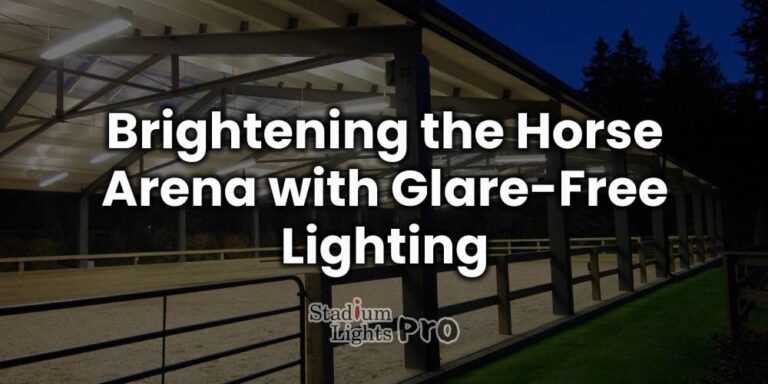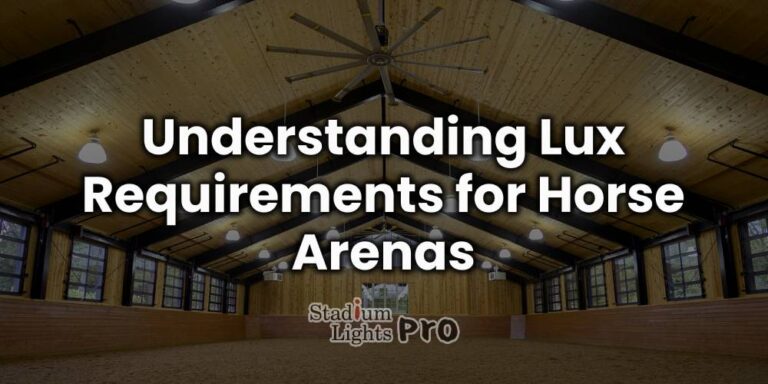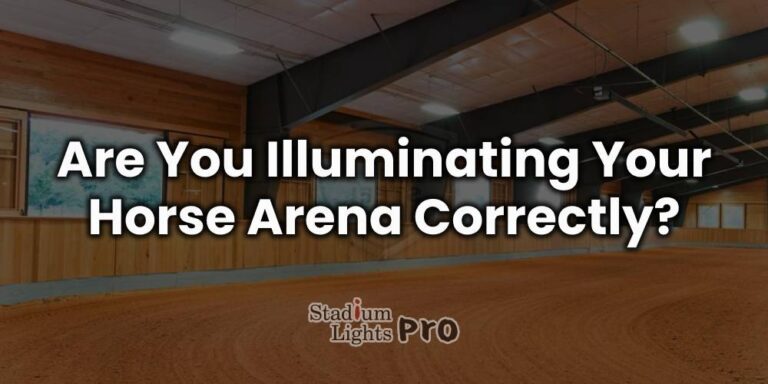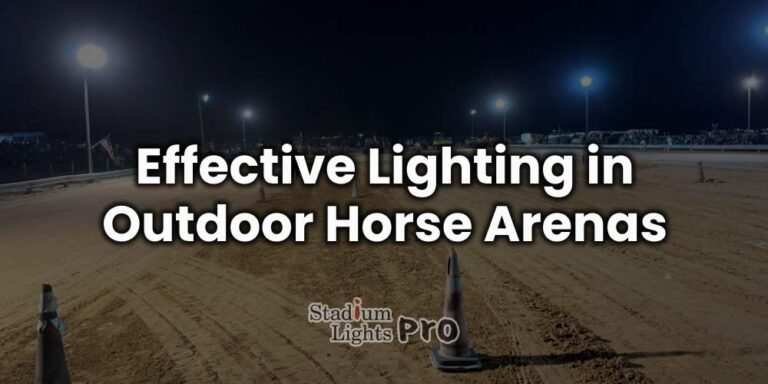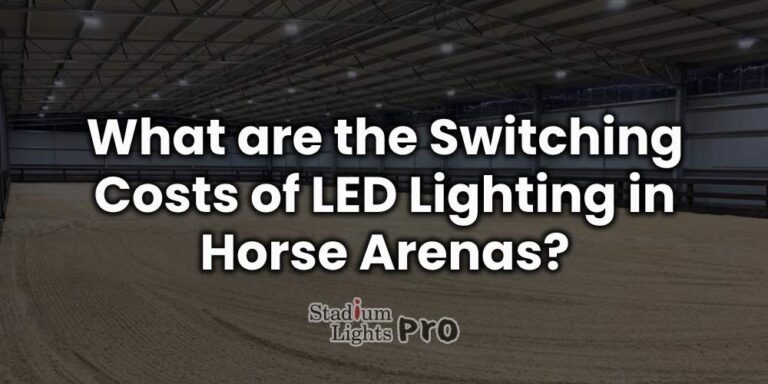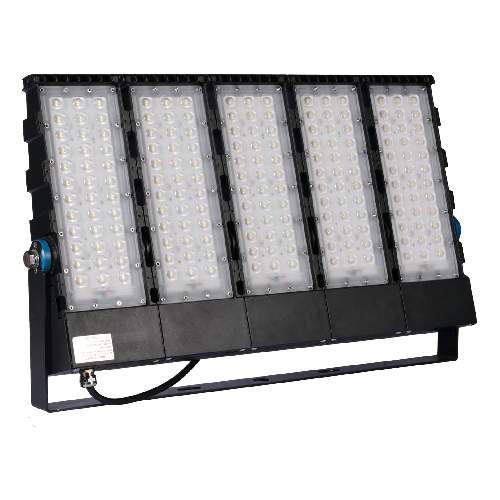
Horse Arena Lighting
Horse arenas are specialized facilities designed for training, exercise, and competitive events involving horses. Lighting in these arenas plays a crucial role in ensuring the safety, comfort, and performance of both horses and riders. Proper lighting enhances visibility, reduces shadows, and minimizes glare, which are essential for preventing accidents and improving the overall experience.
LED lighting has emerged as a preferred solution for horse arenas due to its energy efficiency, durability, and superior lighting quality. This article delves into the key considerations and best practices for horse arena lighting, focusing on aspects such as color temperature, lux control, shadow reduction, and uniformity.

Horse arenas require specific lighting conditions that differ from other sports or recreational facilities. Horses have unique visual needs, and inappropriate lighting can cause discomfort, stress, and even behavioral issues. Therefore, it is crucial to design lighting systems that cater to these needs while ensuring optimal performance and safety for riders.
Contact us for a free lighting consultation
Table of Contents
TogglePreventing Stimulation of Horse Eyes
Horses have a different visual spectrum compared to humans. They are more sensitive to blue and green light and less sensitive to red light. This sensitivity means that lighting systems should avoid high-intensity blue light, which can cause discomfort and stress for horses. Instead, lighting with a warmer color temperature, around 4000K to 5000K, is ideal as it mimics natural daylight without being too harsh.
Color Temperature
Color temperature is a critical factor in horse arena lighting. It refers to the hue of the light source. For horse arenas, a color temperature range of 4000K to 5000K is optimal. This range provides a balance between visibility and comfort, ensuring that the light is bright enough for human activities while being gentle on the horses’ eyes. Light in this range mimics natural daylight, which is important for maintaining the horses’ natural circadian rhythms and reducing stress. Horses are particularly sensitive to blue light, which is prevalent at higher color temperatures, so staying within this range helps minimize discomfort and behavioral issues. LED lights can be easily adjusted to fall within this range, making them an excellent choice for horse arenas. Additionally, LEDs produce a consistent light output that maintains the desired color temperature without significant shifts over time, contributing to a stable and comfortable environment for both horses and riders.
Lux Control
Lux, a measure of illumination intensity, is another crucial consideration. The amount of light required in a horse arena can vary based on the specific activity being conducted. Too much light can be as problematic as too little, potentially causing glare and discomfort for both horses and riders. The ideal lux level for horse arenas ranges from 200 to 500 lux, depending on the activity. For training and casual riding, 200-300 lux is sufficient, providing enough light for visibility without overwhelming the horses. For competitions and events, where higher visibility is crucial, a higher intensity of around 400-500 lux is recommended. LED lighting systems offer precise lux control, allowing arena managers to adjust the brightness according to the specific needs of different activities. This flexibility ensures that the lighting conditions are always optimal, enhancing safety and performance. Moreover, LEDs can be dimmed or brightened smoothly without flickering, providing a seamless lighting experience that can be tailored to any situation in the arena.
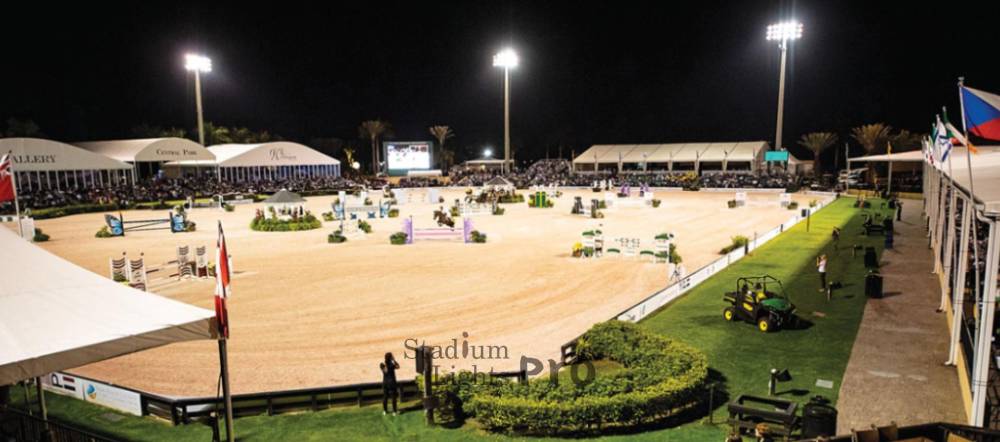
Reducing Shadows
Shadows can be particularly problematic in horse arenas as they can startle horses and affect their performance. Horses have a more pronounced sensitivity to sudden changes in light and dark, which can lead to spooking and erratic behavior. Effective lighting design involves minimizing shadows by ensuring even light distribution from multiple directions, thus creating a stable and predictable environment for the horses. Shadows can also obscure obstacles or uneven surfaces, increasing the risk of accidents. Therefore, a well-thought-out lighting plan is crucial for both the safety and comfort of the horses and their riders.
Lighting from Different Directions
One of the best ways to reduce shadows is to use multiple light sources positioned at various angles. This multi-directional lighting ensures that shadows are softened or eliminated by providing overlapping light coverage. Installing lights at different heights and angles helps create a uniform light field, reducing the chances of shadows casting across the arena floor. For instance, lights can be mounted on poles around the perimeter of the arena and angled towards the center, or suspended from the ceiling at different points to cover all areas evenly. LED lights, with their flexible installation options and wide range of beam angles, are well-suited for this purpose. Their directional nature allows precise control over where the light is aimed, making it easier to achieve the desired coverage without creating harsh shadows.
Uniformity
Uniform lighting is essential in horse arenas to prevent areas of excessive brightness or darkness. A uniformity ratio, which measures the evenness of light distribution, should ideally be around 0.5 to 0.6 for horse arenas. This ratio ensures that the light is evenly spread, enhancing visibility and reducing the likelihood of shadows. High uniformity is critical for maintaining consistent visual conditions throughout the arena, which helps both horses and riders to perform at their best without visual distractions. LED lighting systems, known for their consistent output, can achieve high uniformity levels, making them ideal for such applications. LEDs provide stable and reliable illumination, maintaining the desired light levels across the entire arena. By carefully planning the placement and orientation of LED fixtures, it is possible to achieve a seamless light distribution that minimizes shadows and enhances the overall visual quality of the space. Additionally, advanced lighting design software can be used to model and optimize the lighting layout, ensuring that uniformity targets are met before installation.
Advanced Lighting Knowledge and Techniques
Glare Reduction
In horse arenas, glare can be a major issue, affecting both the performance of riders and the well-being of horses. Glare not only causes visual discomfort but can also impair the ability of riders to see clearly and make accurate judgments, potentially leading to accidents. To address this, LED lights equipped with specialized fixtures and diffusers can effectively minimize glare. These components work by dispersing light more evenly and reducing harsh reflections that can interfere with visibility. Additionally, anti-glare coatings and shielding accessories can be applied to LED lights to further enhance visual comfort. These measures ensure that the lighting remains consistent and soft, creating a more comfortable and safer environment for both horses and riders.
Durability and Maintenance
The demanding conditions of horse arenas require lighting systems that are not only durable but also easy to maintain. LED lights are particularly well-suited to these needs due to their robust construction and longevity. With a lifespan of up to 150,000 hours or more, LED lights far outlast traditional lighting options, reducing the frequency of replacements and the associated costs. Their resistance to shocks and vibrations—common in active environments like horse arenas—further contributes to their reliability. Additionally, LEDs require minimal maintenance compared to conventional lighting systems. Their longevity and durability mean less frequent maintenance interventions, which translates to reduced downtime and operational costs, making them a cost-effective choice for maintaining optimal lighting conditions in horse arenas.
Energy Efficiency
Energy efficiency is a critical factor when selecting a lighting system, especially for large and frequently used spaces like horse arenas. LED lights excel in this area by consuming significantly less energy than traditional incandescent or halogen lighting options. This efficiency results in lower electricity bills, which can be substantial over time, especially for large arenas with extensive lighting needs. Moreover, LED lighting contributes to a reduced carbon footprint, making it an environmentally friendly choice. By opting for LED technology, horse arenas not only benefit from lower operational costs but also support sustainable practices, aligning with broader environmental goals and reducing their overall impact on the planet.
Implementing LED Lighting in Horse Arenas
Planning and Design
Effective horse arena lighting begins with careful planning and design. Arena managers should conduct a thorough assessment of the facility, considering factors such as the size of the arena, the types of activities conducted, and the existing infrastructure. Based on this assessment, a customized lighting plan can be developed to address the specific needs of the arena.
Choosing the Right Fixtures
Selecting the appropriate fixtures is crucial for achieving the desired lighting effects. LED fixtures come in various designs and specifications, each suited for different applications. High bay lights are ideal for large indoor arenas, providing powerful illumination with minimal glare. For outdoor arenas, floodlights and pole-mounted fixtures are more suitable, offering wide coverage and high durability.
Installation Considerations
Proper installation is key to ensuring the effectiveness of the lighting system. Fixtures should be mounted at strategic locations to provide even light distribution and minimize shadows. For indoor arenas, lights should be installed at a height that allows for optimal coverage without causing glare. Outdoor installations should consider factors such as weather resistance and protection against elements.
Control Systems
Advanced control systems can enhance the functionality and efficiency of horse arena lighting. Dimming controls allow for adjustable brightness levels, accommodating different activities and times of the day. Motion sensors and timers can further optimize energy usage, ensuring lights are only on when needed. Smart lighting systems, integrated with IoT technology, offer remote monitoring and control, providing convenience and flexibility for arena managers.
Real-World Applications
Indoor Horse Arena
A case study of an indoor horse arena that implemented LED lighting revealed significant improvements in visibility and comfort. By installing high bay LED lights with a color temperature of 4500K and a lux level of 300, the arena achieved uniform lighting with minimal shadows. Riders reported enhanced performance, and horses showed reduced signs of stress and discomfort. The energy consumption dropped by 60%, leading to substantial cost savings.
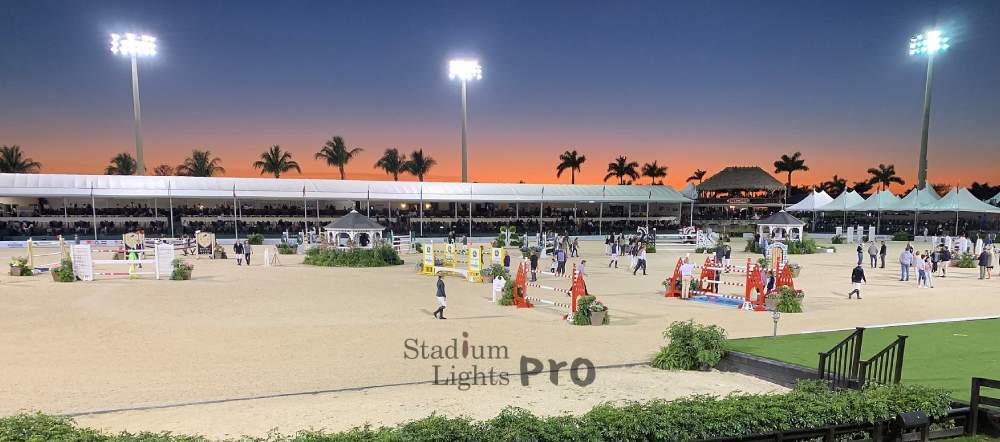
Outdoor Horse Arena
An outdoor horse arena faced challenges with uneven lighting and high maintenance costs. Switching to LED floodlights with a color temperature of 5000K and a lux level of 400 improved the lighting conditions dramatically. The new lighting system provided consistent illumination across the arena, eliminating dark spots and shadows. The durable, weather-resistant LED fixtures reduced maintenance requirements, and the energy-efficient design cut electricity costs by half.
Smart Lighting Solutions
The future of horse arena lighting lies in smart lighting solutions. These systems utilize IoT technology to provide advanced control and monitoring capabilities. Smart lighting allows for real-time adjustments based on usage patterns, ambient light conditions, and specific requirements of different activities. This adaptability enhances both the efficiency and effectiveness of the lighting system.
Sustainable Lighting Practices
Sustainability is becoming a key focus in lighting design. LED lighting, with its energy efficiency and long lifespan, is inherently more sustainable than traditional lighting options. Future trends include the integration of renewable energy sources, such as solar power, to further reduce the environmental impact of horse arena lighting. Additionally, the use of recyclable materials and environmentally friendly manufacturing processes will contribute to the overall sustainability of lighting solutions.
Conclusion
Lighting plays a pivotal role in horse arenas, impacting the safety, comfort, and performance of both horses and riders. LED lighting has emerged as the optimal solution for these environments, offering advantages such as precise color temperature control, lux adjustment, shadow reduction, and high uniformity. Proper planning, fixture selection, and installation are essential to maximize the benefits of LED lighting in horse arenas. As technology advances, smart lighting solutions and sustainable practices will further enhance the effectiveness and efficiency of these systems. By prioritizing the visual needs of horses and the operational requirements of arena managers, LED lighting can transform horse arenas into safer, more comfortable, and more enjoyable spaces for all.

